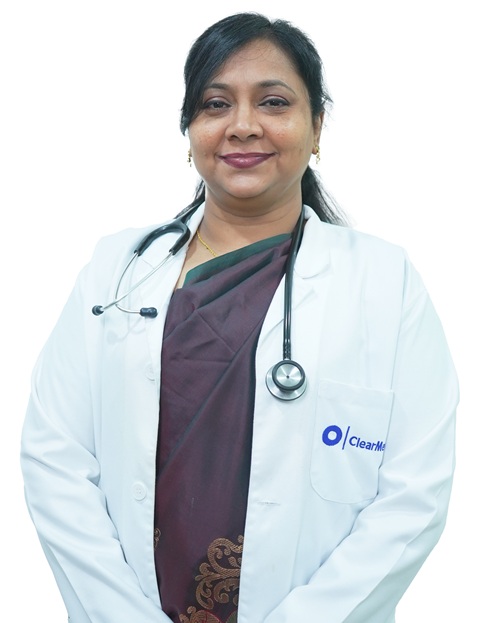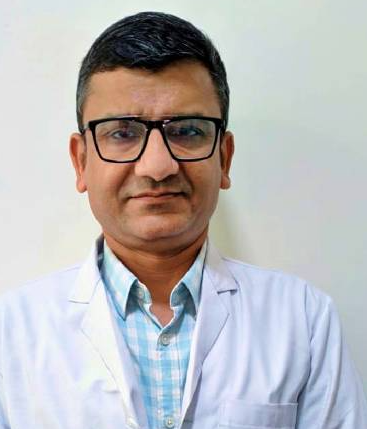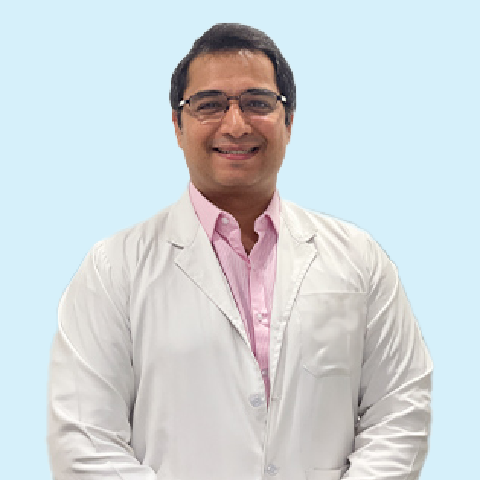Different Types of Acne Scars - Know How to Treat Them

Quick Summary
- Acne scars are marks left on the skin after a pimple or other acne lesion has healed.
- There are different types of acne scars and how to treat them will depend on the individual's skin type and the specific type of acne scar.
- It is essential to consult with an experienced dermatologist to determine the best treatment option.
An acne scar is a mark left on the skin after a pimple, or other acne lesion has healed. There are different types of acne scars and how to treat them will depend on the individual's skin type and the specific type of acne scar.
It is essential to consult with an experienced dermatologist to determine the best treatment option. Let's read about different types of acne scars with pictures.
What is an Acne Scar?
Inflammation or swelling of acne lesions leads to different types of acne scars. It is caused by damage to the skin tissue and can take many forms, including shallow pits, raised scars, or dark spots.
Some acne lesions can be tiny, which can leave superficial scars that may heal faster. Blemishes can occasionally leak the contents into the surrounding tissue, leaving deeper scarring. The skin produces new collagen fibres to treat the scar.
They can be difficult to treat, and the best treatment option will depend on the type and severity of the scars and the skin type of an individual.


Different Types of Acne Scars
There are a few different types of acne scars, which can take many forms. Here are some common types of acne scars, along with pictures to help illustrate their appearance:
- Icepick scars: Icepick scars are deep, narrow scars resembling the marks of an ice pick. They are typically small but can be deep and difficult to treat.
- Boxcar scars: Boxcar scars are shallow to medium-depth with sharp, defined edges and a flattened appearance. They can be round or oval.
- Rolling scars: Rolling scars are shallow scars that have a rolling or wave-like appearance on the surface of the skin. They are often caused by underlying bands of scar tissue that pull on the skin.
- Hypertrophic scars: Hypertrophic scars are raised scars above the skin's surface. They are often red or pink and may be itchy or painful.
- Keloid scars: Keloid scars are raised scars extending beyond the boundaries of the original wound. They are common among people with darker skin tones and are more challenging to treat.
Icepick Scars
Ice pick scars are caused by a loss of collagen in the skin. New collagen is produced to repair the damage to the skin. However, if too little or too much collagen is made, it can form acne scars, including ice pick scars.
Some factors that may contribute to the development of ice pick scars include:
- Picking or squeezing pimples: When you squeeze or pick at a pimple, you can damage the skin and disrupt collagen production, leading to acne scars.
- Hormonal changes: Fluctuations in hormone levels can increase the production of oils in the skin, leading to the development of acne with scars.
- Genetic predisposition: Some people are more prone to developing acne scars due to genetic factors.
- Skin type: People with oily skin may be more prone to developing acne and acne scars.
Boxcar Scar
A boxcar scar is an acne scar characterized by a depressed appearance with sharp edges. The factors contributing to the development of boxcar scars include picking or squeezing pimples, hormonal changes, genetic predisposition, and oily skin. Some common features of boxcar scars are:
- They are typically wider than ice pick scars.
- It is caused by a loss of collagen in the skin.
- They can occur as a result of acne or other skin conditions.
- Boxcar scars can be found on any part of the body, but they are most commonly found on the face.
- The treatments for boxcar scars may not eliminate boxcar scars, but they can help improve their appearance.
Rolling Scar
Uneven bands of tissue under the skin due to the healing of the pimple wound by collagen create rolling scars. They can be caused by hormonal imbalance, oily skin or picking or squeezing pimples. Rolling scars can occur due to acne or other skin conditions that damage the skin and disrupt collagen production. The key features of rolling scars are:
- The size and severity of rolling scars can range from person to person.
- They are typically wider than ice pick scars.
- They are commonly found on the lower cheeks and jawline.
- They may be less noticeable than other types of acne scars.
- Rolling scars may not go permanently, but personalized treatments can reduce the scars.
Hypertrophic Scar
Hypertrophic scars are a type of raised scar which occurs due to too much collagen production in the body during the healing process. The shift in the levels of hormones during puberty or pregnancy may increase the risk of developing hypertrophic scars. The features of hypertrophic scars are:
- They are typically red or purple and are raised above the surrounding skin.
- The scars can be itchy and uncomfortable.
- It is most commonly found on the chest, shoulders, and back.
- They can occur after a wound or injury to the skin, like a cut, burn, or piercing.
- Although they can occur in people of any race but found more in darker-skin-toned people.
- Sometimes, surgery is needed to remove large or severe hypertrophic scars.
Keloid Scar
Keloid scars are raised above the surrounding skin and have a bumpy or firm texture. It develops when too many skin proteins pile up on top of one another. The collagen can build up outside the boundaries of the initial wound, unlike hypertrophic scars. The key features are:
- Keloid scars are typically red or purple.
- It can range in size, but they tend to grow larger over time.
- They are most commonly found on the chest, shoulders, and back, but they can occur anywhere on the body.
- The scars may be itchy and uncomfortable.
- It is more likely to occur after a wound or injury to the skin. Hormonal changes, such as those that occur during puberty or pregnancy, may also increase the risk of developing keloid scars.
Treatment of acne scars
There are several options for treating acne scars, which depend on the type and severity of the scars. Some common treatments for acne scars include:
- Topical treatments: These include creams and serums containing ingredients like alpha hydroxy acids, retinoids, and vitamin C. It helps to improve the appearance of acne scars by promoting collagen production and skin cell turnover.
- Chemical peels: It uses a solution to remove the top layer of skin, revealing new, smoother skin underneath. This can improve the appearance of acne scars by removing damaged skin and stimulating collagen production.
- Microdermabrasion: It is a non-invasive procedure. A fine, abrasive tool is used to remove the top layer of the skin and reduce acne scars.
- Laser treatments: Several types of laser treatments can be used for acne scar treatment, such as fractional laser resurfacing, which can help to improve the appearance of acne scars by removing damaged skin and stimulating collagen production.
- Fillers: Injectable fillers fill in the shallow acne scars, giving the skin a smoother appearance.
Takeaway
There are different types of acne scars like icepick scars, boxcar scars, rolling scars, hypertrophic scars, and keloid scars. The best treatment to remove acne scars depends on the type and severity.
While treatments are available to reduce acne scars, the most critical thing to remember is to work toward prevention by immediately starting treatment for any active breakouts. The probability of avoiding permanent acne scarring is to stop new acne breakouts from developing. Contact HexaHealth for a free consultation on different types of acne scars and how to treat them.
Frequently Asked Questions
What are the most common types of acne scars?
The type of acne scars depends on various factors, including the severity of the acne, the skin type of an individual, etc. The most common types of acne scars are:
- Ice pick scars
- Boxcar scars
- Rolling scars
- Hypertrophic scars
- Keloid scars
What type of acne causes scars?
Any acne can cause scars when the inflammation associated with acne damages the skin and disrupts collagen production. Acne and acne scars may be more common in people with oily skin. Acne scars are more likely to form if you squeeze or pick at your pimples.
How can I get rid of acne scars?
There are several treatment options for acne scars, including dermal fillers, laser resurfacing, dermabrasion, and punch excision. It is better to consult a dermatologist for personalized treatment recommendations and to follow a skincare routine that includes non-comedogenic products. Avoiding picking or squeezing pimples can also help minimize the risk of developing new acne scars.
How do I know what types of acne scar I have?
To determine what type of acne scars you have, a dermatologist will examine your skin and consider factors such as the size, shape, and appearance of the scars, as well as the location and distribution of the scars on your body. They may ask about your acne history and perform a skin biopsy to examine the scar tissue more closely.
What types of acne scars are permanent?
Acne scars are permanent, as they are caused by changes in the structure of the skin. However, acne scars can often be reduced with treatment. Some types of acne scars are responsive to treatment, while others may be more difficult to treat and require ongoing management.
What types of acne scars are permanent?
Acne scars are permanent, as they are caused by changes in the structure of the skin. However, acne scars can often be reduced with treatment. Some types of acne scars are responsive to treatment, while others may be more difficult to treat and require ongoing management.
Which types of acne scar is most difficult to treat?
Keloid scars are generally considered the most difficult types of acne scars to treat. Keloid scars may recur even after treatment so ongoing management may be necessary.
Do acne scars ever fully heal?
Although acne scars are frequently treatable, they are permanent. It is necessary to consult a dermatologist for personalized treatment recommendations and to have realistic expectations about the potential outcomes of treatment.
How do you know if an acne scar is permanent?
Although scarring does not always result from breakouts, having inflammatory acne makes acne scars more likely to be permanent. Consult a dermatologist if you want the acne scars to reduce.
How many days does acne scars take to fade?
The amount of time it takes for acne scars to fade will depend on the type and severity of the scars and the individual's skin type and overall health. Some acne scars may fade over time, while others may require treatment to improve their appearance.
Does itchy acne mean its healing?
It is not uncommon for acne to feel itchy as it is healing. The itching may be caused by inflammation, and the production of new skin cells as the acne begins to resolve. In some cases, the itching may be a sign that the acne is getting better and the skin is repairing itself.
What makes acne heal faster?
You can take to help acne heal faster by doing the following:
- Keep the affected area clean
- Use non-comedogenic products
- Avoid touching your face
- Use a spot treatment such as benzoyl peroxide or salicylic acid product
- A humidifier can help keep the skin hydrated and help acne heal faster.
Which foods help acne scars heal?
Salmon, anchovies, sardines, and mackerel are foods high in omega-3 fatty acids and have a lot of antioxidant characteristics that can help reduce skin irritation.
When should I worry about acne scars?
If you have persistent acne or severe acne, it is a good idea to seek treatment as soon as possible to minimize the risk of acne scars.
Last Updated on: 2 January 2023
Reviewer

Dr. Priyanka Sharma
MBBS, DNB Plastic Surgery, Training in Hand and Microvascular Surgery, Training in Hair Transplant
15 Years Experience
Dr Priyanka Sharma is a highly regarded Plastic, Reconstructive, and Aesthetic Surgeon with over 15 years of experience.
She is currently associated as a Consultant with:<...View More
Author

An enthusiastic writer with an eye for details and medical correctness. An avid reviewer and publisher. She emphasises authentic information and creates value for the readers. Earlier, she was involved in making ...View More
Expert Doctors (10)
NABH Accredited Hospitals (5)
Latest Health Articles
Related Treatments























 Open In App
Open In App